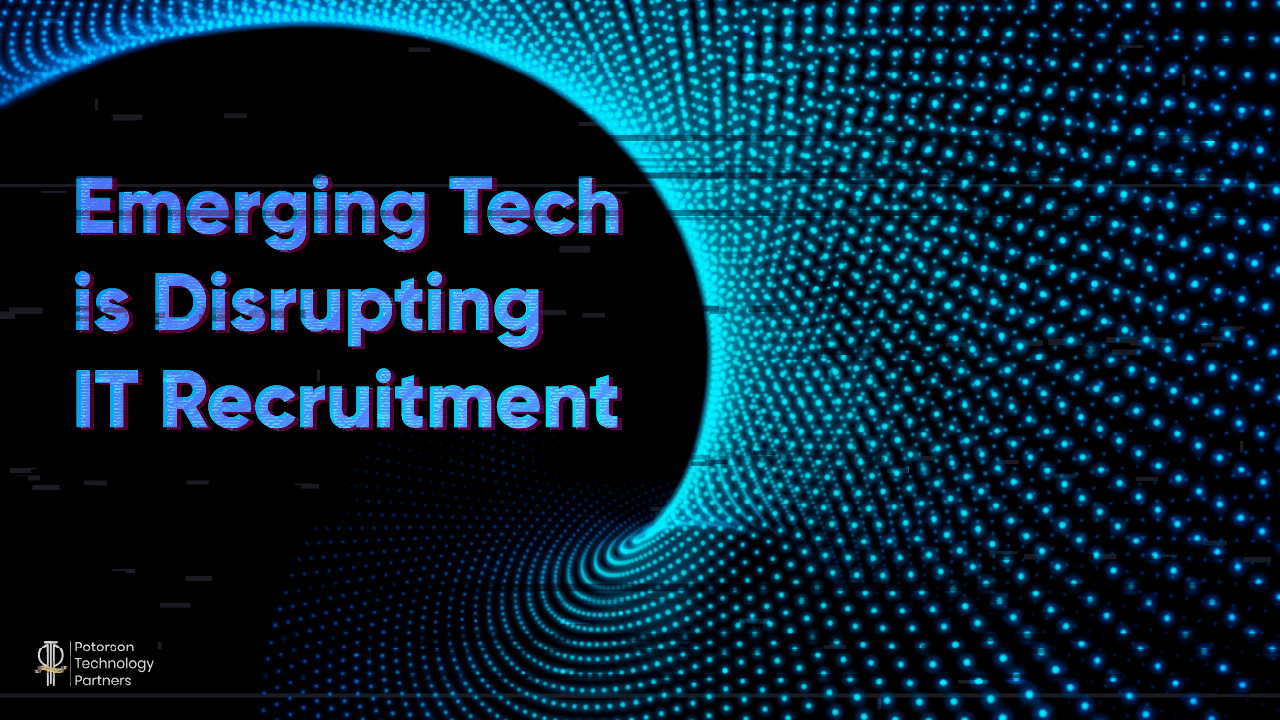Meet Andrew Roberts, an experienced cloud engineer who is job hunting for the first time in a decade. Although his credentials are stellar, he’s still got a challenge ahead: Andrew will need to successfully navigate a very different recruitment landscape this time around. That’s because IT recruitment, and hiring as a whole, have changed pretty drastically over the past decade as new technologies have emerged and gradually become more feasible to use.
Emerging technologies in recruitment and hiring
Recruiters and hiring managers are now able to make faster, more accurate candidate decisions, within the context of a relatively streamlined modern hiring process. Let’s examine three of the most prevalent (and exciting!) new technologies, and how they’re helping to elevate existing technology recruitment processes.
Recruitment automation and hiring
For many of us, the concept of automation conjures images of pristine, high-end automobile factories, filled with robots and metal, working away diligently – and largely devoid of humans. While that’s certainly an area where automation is very highly visible, manufacturing actually may not be where we see the lion’s share of its impact.
Consider how manual legacy administrative and HR processes are: Onboarding, offboarding, training, evaluations… All these tasks are urgent, important, and extremely time intensive. Even digitized hiring processes will create an unavoidable glut of “paperwork,” as it were, and until recently, there was no good way around having an actual human being sit and complete or review all of it. Computers, people figured, were good at objective decision-making – the quantifiable stuff, in other words – and humans were… Well, nothing could ever take the place of humans if a subjective decision was needed. Right?
It all sounds very naive in today’s post-ChatGPT world. Artificial intelligence appears to have been the missing link to a higher degree of automation for modern business processes. Unlike even five years ago, now we are more confident in “handing off” tasks requiring subjective reasoning to an AI, thanks to leaps forward in several sub-fields related to the discipline. Advances in natural language processing mean that a properly trained and contextualized AI can be implemented during steps in the hiring process that would have mandated that humans spend precious hours poring over disparate information and connecting the dots to decide which candidate makes the cut. Of course, we’re not removing the human entirely – it’s generally agreed that a human review step should be appended when using AI in this way.
We are, however, still saving businesses thousands of hours and millions of dollars when compared to the legacy way, or even newer digitized ways, of getting things done. Smartly selecting a recruitment automation implementation partner and identifying where improvements will be most effective is important, but organizations that can pull it off have much to anticipate: For example, multinational manufacturer and household name Unilever recently looked to revamp their global recruiting processes with the benefit of automated tooling and AI insights. Using a highly strategic approach, they were ultimately able to reduce the time taken up by the hiring process by approximately 90% – meaning they’re now able to deploy new talent that much faster – and to recover a tidy $1m USD in the process.
Blockchain technology in validating candidate skills and experience
The blockchain is a bit complex but well worth exploring in its own right, as well as in an HR and recruitment context. Think of the blockchain as a large, publicly accessible, time-stamped ledger. Each time an operation is executed (via a smart contract on the blockchain, which is basically a program), the result is stored for all to view and secured with modern cryptographic solutions. Editing or removing something from the blockchain is possible, but the effort required is generally prohibitive, given that the revision must be made across the entirety of nodes on the chain. Although it’s tempting to solely associate the blockchain with its most high-profile use case, cryptocurrency, blockchain tech is on the rise for all kinds of applications — including recruiting and hiring.
If it’s not readily apparent how this technology fits into the puzzle just yet, consider how blockchain problem-solving might impact a trend that’s been plaguing hiring managers for decades, if not centuries: Falsified resumes and credentials. According to well-documented research from CareerBuilder, an estimated 75% of hiring managers have caught candidates lying on their resumes (and we want it to stop, so if you’re reading this and still thinking about doing it, this one’s for you: Is lying on a resume ever okay?).
Since changes to the blockchain are so difficult once a contract is executed, credentials stored on the blockchain could pave the way for easier, more accurate employment verification processes for HR professionals. Candidates also recognize the advantages of this approach, as it allows for a faster application process, supports individual data stewardship, and is protected by the same cryptographic protocols as the rest of the chain. If it sounds too good to be true, it’s actually already being done: Since 2017, MIT has offered digital diploma verification, handled through open-source verification standard Blockcerts, to grads who opt into the process. If both candidates and HR can unite on the blockchain as a credentialing standard, both will benefit.
Data analytics enable better decision making
Predictive analytics help to put the power of big data into the hands of businesses of all sizes, delivering timely and accurate insights based on historical data trends. Most predictive analytics tools will need to leverage machine learning (and, increasingly, artificial intelligence) technology in order to achieve the near-real-time speed that’s optimal for their customer base.
Modern business processes seem to produce an unending stream of theoretically helpful information, yet until the advent of capabilities like we now see in AI/ML solutions, no one could figure out what to actually do with all of that data – except store it. “Traditionally, companies were saying, ‘Just archive [that data] and we’ll figure out what to do with it later,’” remarks Jason Hardy, global CTO of Hitachi Ventara. “That’s turned into a ‘No, this actually impacts us now; we need to be able to read that data in real-time and process and infer against it.’” When you stack up all of the advantages predictive analytics provides (new revenue opportunities, tougher fraud detection, and greater risk reduction being just a few examples), it’s clearly a good thing the data was even stored to begin with.
[RELATED: You work hard enough. Put your data to work too.]
When it comes to recruitment, the use cases for predictive analytics are pretty straightforward – e.g., providing a forecast for which candidates are most likely to accept an offer for a given role based on their performance so far and particulars, and so on – but don’t overlook those analytics can also help you steer your organization and make strong data-driven decisions as regards your workforce, projects, and even company culture.
“It’s important to be able to use your analytics to show how new hires will adjust to the culture, or change the culture,” says David Solot (Analytics Product Manager, Caliper). “The data can make you think, ‘If we continue hiring in a certain way, do we need to rethink who we are?’ and ‘Is there strong alignment between our new hires and who we are, or do we need to grow as an organization?’”
Conclusion
Today is an exciting time to be a recruiter, hiring manager, or candidate. Just like Andrew discovered, it’s an entirely new ballgame out there! The basic rules haven’t changed, but technological advances have helped streamline the human effort and time sinks of the recruiting process. Although that might sound robotic, the result is that hiring managers have more time to assess candidates, ensuring a stronger, more human-led org.
Looking for your next career? Check out our job listings here, or reach out via email: hello@ptechpartners.com.





